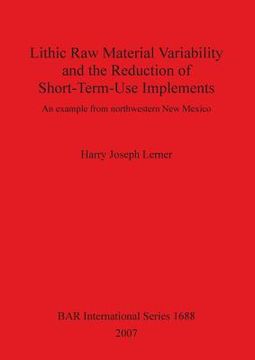Share
lithic raw material variability bar s1688 (in English)
Harry Joseph Lerner
(Author)
·
British Archaeological Reports Oxford Ltd
· Paperback
lithic raw material variability bar s1688 (in English) - Lerner, Harry Joseph
$ 60.63
$ 72.00
You save: $ 11.37
Choose the list to add your product or create one New List
✓ Product added successfully to the Wishlist.
Go to My WishlistsIt will be shipped from our warehouse between
Tuesday, May 14 and
Wednesday, May 15.
You will receive it anywhere in United States between 1 and 3 business days after shipment.
Synopsis "lithic raw material variability bar s1688 (in English)"
Chipped stone tools are a truly dynamic medium of material culture. From initial reduction to contemporary excavation, lithic artifacts undergo continuous change. The role of the properties of raw materials in determining rates of use-wear accrual is poorly understood and has rarely been assessed quantitatively. This study offers such quantification regarding four materials exploited for the production of short-term use implements at the Late Archaic FA2-13 site located just outside the city of Farmington, New Mexico. Both experimental and archaeological use-wear evidence was assessed in separate but related ways. Digital image analysis of use-wear invasiveness using ClemexVision PE and GIS analysis of use-wear homogeneity using Idrisi Kilimanjaro yielded distinct but highly complementary results. Direct testing of material properties of non-archaeological samples using a Hysitron Triboindenter served to further clarify these findings in terms of the complex relationship between raw material surfacehardness and roughness. The results of the present study show that there are significant differences between rates of wear accrual among the four materials. Analysis of tools from FA2-13 indicates that while scraping activities likely did predominate, it may also be feasible to generate more detailed assessments regarding the kinds of scraping activities that were undertaken and the respective intensities with which they were performed. This increased insight can then be extrapolated for application to long-term use technologies and their more complex life histories.
- 0% (0)
- 0% (0)
- 0% (0)
- 0% (0)
- 0% (0)
All books in our catalog are Original.
The book is written in English.
The binding of this edition is Paperback.
✓ Producto agregado correctamente al carro, Ir a Pagar.

